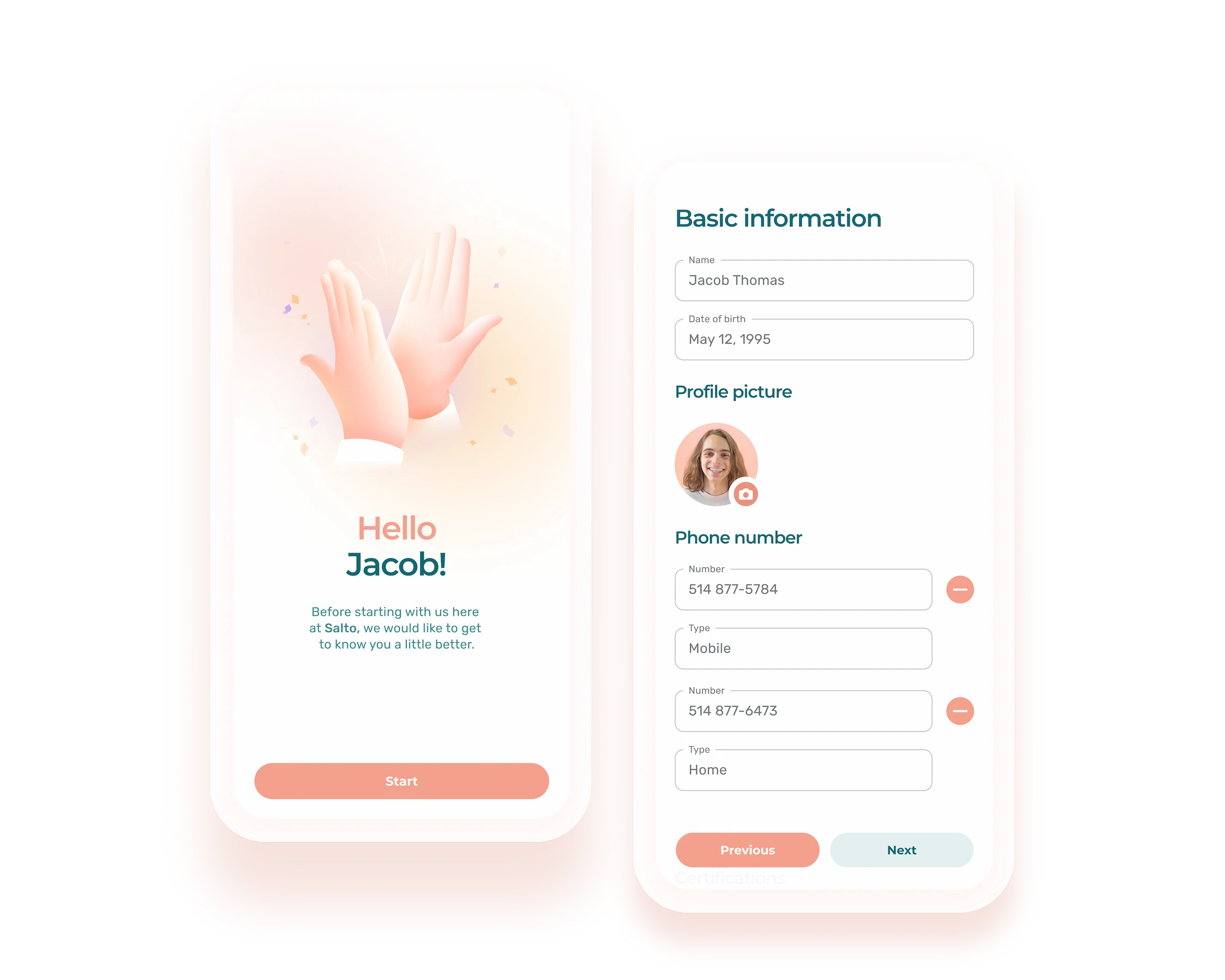Paid time off can be a thorny management challenge, especially for managers with teams that have variable working hours.
Paid leave, statutory holidays, vacations, sick days—there are many different types of time off, and it’s your responsibility to make sure you comply with the various laws that apply to each.
But paid time off isn’t just a legal obligation. It also provides a host of benefits for employees and employers alike.
When employees take time off, they generally return to work more motivated and productive. It’s also good for their mental and physical health.
Taking vacations additionally creates better work-life balance and enhances employee well-being. So it’s very much to your advantage to encourage your team to take time off!
In this post, you’ll learn how to better manage time off at your company and how to calculate the amount to which each of your employees is entitled. Happy reading!
What’s the Difference Between Paid Time Off, Vacations and Statutory Holidays?
Let’s take a look at the types of time off generally available to company employees.
All your employees are entitled to paid time off, which can be in the form of a vacation, sick leave or even statutory holidays. Paid time off is simply a period during which an employee is authorized to be absent from work and still receive their salary.
Vacations are therefore paid time off. Employees have access to a certain number of vacation days per year, depending on their employment contract.
Public holidays, on the other hand, are specific days of the year, such as religious, civil or national holidays, when companies generally suspend their operations. Employees who still have to work on these days may be compensated accordingly, in accordance with current legislation.
Your employees can also take sick days, the number of which is determined by the laws in effect or by their employment contract. Sick leave is generally paid, but may also be at the employee’s expense, depending on the case.
Paid Time Off Around the World
Different parts of the world have very different numbers of paid days off to which workers are entitled. Each country can set a minimum number of days of paid time off.
For example, in Canada, employees must have a minimum of 10 days off per year in addition to 8 days of statutory holidays. By comparison, in France, employees enjoy 25 days of paid vacation. In the United States, there is no minimum number of paid days off to respect.
In a labor shortage, however, many employers decide to offer more than the legal minimum. For example, many Canadian companies have decided to offer their employees 3 or even 4 weeks’ vacation as soon as they are hired. This allows them to recruit and retain employees much more easily.
Are Part-Time Employees Entitled to Paid Time Off?
In Quebec, part-time employees have the same right to paid time off as full-time employees, regardless of the nature of their employment contract.
As a manager, however, you must ensure a fair allocation of days off within your team. To do so, you need to set up rules on how these days are approved, and share your policy with your employees.
How to Better Manage Days Off
For companies, paid-leave management is similar to absence management. It’s a very important task that requires great care.
Here are a few tips to help you improve time-off planning for your staff.
1. Be Transparent and Proactive
Does your company have a vacation policy? This is an important HR tool for employees, as it lets them know and understand how vacations work at the company.
More specifically, it tells your team members how requests are approved: by seniority, first come first served, according to family situation, etc. It also clarifies whether there are certain times of year when you can’t accept time off requests, such as the holidays or summer vacation.
As a manager, it’s your responsibility to make sure that your employees have easy access to complete information concerning their time off. All too often, employees don’t even know how many days off they’ve accumulated. Make this information available to them.
Take the time to provide thorough training so that your employees are aware of their rights and understand how time off works and why it’s important.
If you’re a manager at a company that hires a lot of young people, such as a grocery or retail store, it’s vital to train your employees, since this may be their first work experience.
For example, when onboarding a new employee, take the time to explain how to check their vacation bank, how to request time off and even how to justify an absence. This way, when the time comes, they’ll be able to take care of the administrative formalities themselves.
Don’t hesitate to send out reminders when vacation periods are coming up, so that your employees apply as soon as possible.
2. Make Sure Your Employees Take Their Time Off
Taking time off is necessary for your employees’ well-being. If you want them to be happy and productive at work, it’s crucial that they get regular downtime.
You can lead by example by taking regular time off yourself. You can also remind your employees of the number of days off they have remaining, and encourage them to take them.
Some companies, such as construction firms, also decide to close during certain periods of the year. This is a good solution in order to ensure that the entire team gets some rest.
Don’t forget that your part-time employees are also entitled to paid time off!
3. Use Scheduling Software
The best way to improve your time-off management is to equip yourself with scheduling software. This will automate several aspects of management, including time-off requests, approvals, and posting the company’s vacation policy.
For example, using scheduling software, you’ll receive a notification as soon as an employee makes a new time-off request. Your employees can send you an explanatory note, and you can do the same when approving or refusing the request.
The employee will then receive a notification confirming their request. Approved days off will automatically appear in the schedule or vacation tracking tool, depending on the software in use. This way you’re sure not to forget them when the time comes.
Most of these apps also give your staff quick access to their bank of days off—so they know at a glance how many sick or rest days they have left.
How to Calculate Vacation Pay?
In Quebec, employees are entitled to a vacation allowance that varies according to the reference year used by the company, as well as the employee’s years of continuous service and the gross salary earned during the reference year.
The reference year generally stretches over 12 months, from May 1 to April 30.
The amount of vacation allowance is calculated as a percentage of the employee’s gross salary. For example, an employee with 1 to 3 years’ continuous service will receive 4% of their gross salary for the 2-week vacation required by law. If they have 3 or more years of continuous service, they will be entitled to 3 weeks’ vacation, which comes out to 6% of their gross salary.
For example, an employee has 2 years of service. Their annual salary is $50,000. During their 2-week annual vacation, they will receive an allowance of $2,000 (50,000 x 4% = $2,000).
Statutory Holidays
Employees also receive compensation for statutory holidays. It must be equal to 1/20 of the salary earned by the employee during the 4 full pay weeks preceding the holiday. The allowance excludes overtime.
For example, an employee makes $15 an hour. They have earned $1,200 over the past 4 weeks, so the allowance comes out to $60 (1,200 ÷ 20 = 60).
To help you get started with planning your team members’ time off, feel free to use a time-off planning template. You can also use a time-off request form in Word format to keep track of your employees’ requests.
Happy planning!












